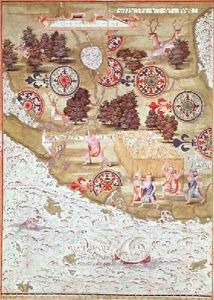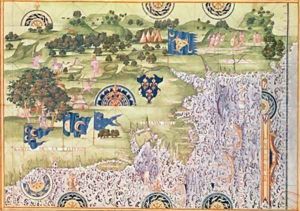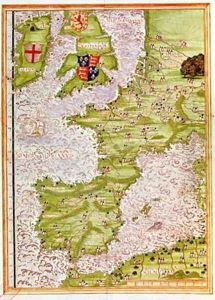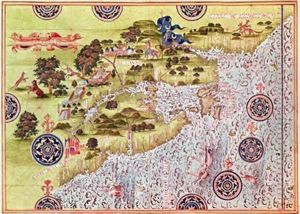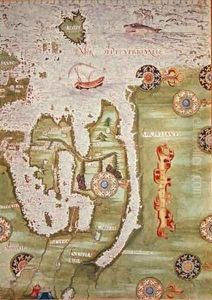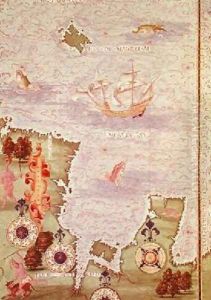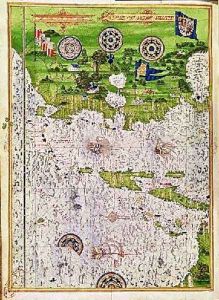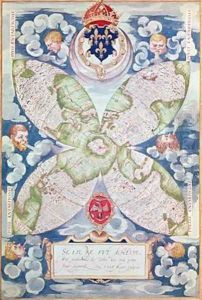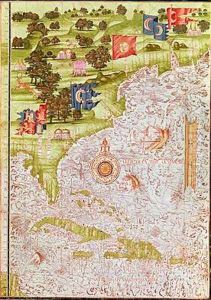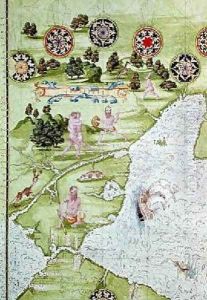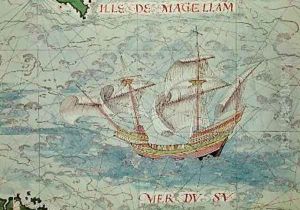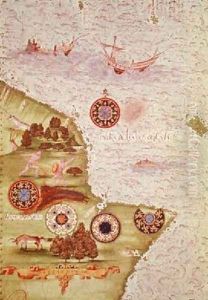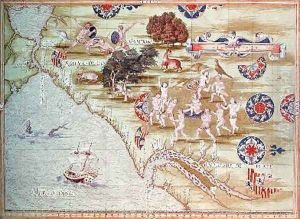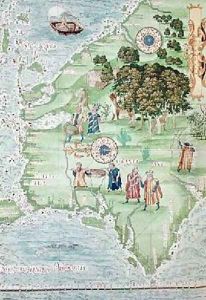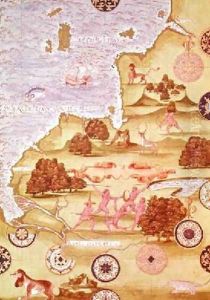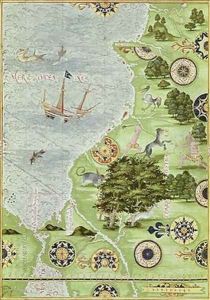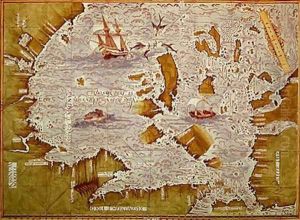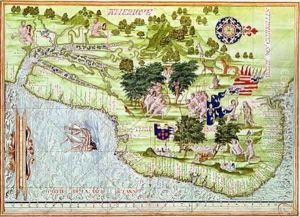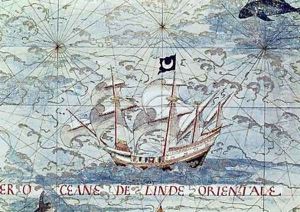Guillaume Le Testu Paintings
Guillaume Le Testu, sometimes referred to as Guillaume Le Têtu, was a French privateer, navigator, and cartographer, notable for his famous world map, the 'Cosmographie Universelle', which was published in 1555. Born around 1509, Le Testu hailed from a time of intense maritime exploration and mapmaking. His works are representative of the Renaissance period's fascination with discovery and the expansion of knowledge about the world.
Le Testu was from Le Havre, France, and he became well-known for his piracy activities in the Caribbean, where he operated under a letter of marque—a government license authorizing him to attack enemy shipping during wartime. In addition to his seafaring exploits, Le Testu was a skilled cartographer, and his 'Cosmographie Universelle' is an important cartographic document of the period, reflecting the state of geographic knowledge during the mid-16th century. This world map is particularly noted for its decorative elements and the inclusion of fantastical sea creatures and other embellishments that were common in maps of the time.
Despite his contributions to navigation and cartography, Guillaume Le Testu's life was marked by a tragic end. He was captured by the Spanish in 1573 during one of his privateering ventures. After his capture, he was executed, bringing an abrupt end to the life of a man who had spent much of his career on the high seas. His legacy, however, lives on through his maps, which continue to be studied and admired for their historical value and artistic merit. The 'Cosmographie Universelle' remains a testament to the adventurous spirit of the Age of Exploration and the quest for knowledge that drove many explorers and mapmakers of the Renaissance.
